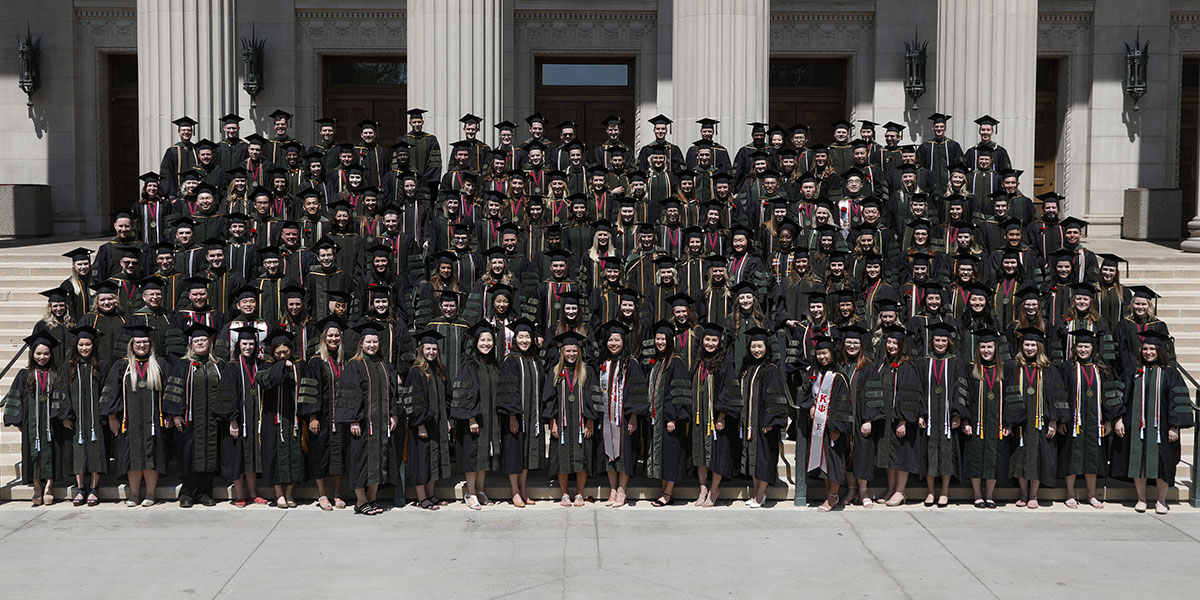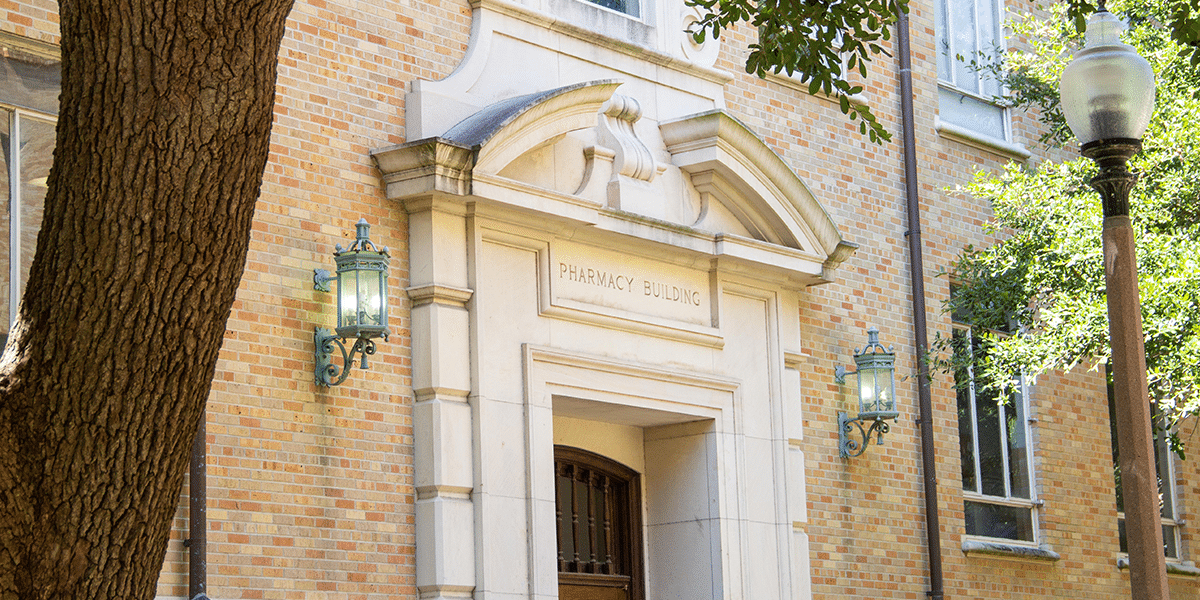For those that are considering pursuing a Pharmacy degree, there are a wide variety of career opportunities available. It all depends on how long you decide to pursue your educational studies in the field. Here are some of the many career choices available.
Clinic Pharmacy Practice: In this setting, the pharmacist works with physicians and assumes the responsibility of providing medication therapy management, especially for patients with chronic diseases like diabetes, asthma, and high blood pressure.
Best Pharmacy Schools
| Rank | School | Location |
|---|---|---|
| 1 | The University of North Carolina | Chapel Hill, North Carolina |
| 2 | University of Minnesota | Duluth & Minneapolis, Minnesota |
| 3 | University of California San Francisco | San Diego, California |
| 4 | The University of Michigan | Ann Arbor, Michigan |
| 5 | University of Texas | Austin, Texas |
The main goal is to provide the appropriate medication for a positive result. Geriatric Pharmacy: As the population grows older the need for pharmacists treating mature adults will be in great demand. According to PharmacySchool.com, this year, “37% of the U.S. population will be mature adults, who are expected to consume more than half of all health care resources.
Home Healthcare: Graduates of PharmD, may choose to pursue home healthcare for those that are not required to be treated in a hospital setting but still need professional medical care in their homes. In this role, they will provide medications, pain management medication, nutritional supplements, and chemo.
Hospital Pharmacy: Many choose to work in a hospital setting where they are more involved in patient care. Hospital pharmacists review patient medications and adjust as appropriate. They work closely with other hospital personnel. Clinical pharmacists have a variety of practices they can concentrate on, including pediatrics, critical care, neurology, critical care, and many other areas.
Pharmaceutical Industry: Those that choose this industry are responsible for research and development including careers as pharmaceutical scientists, formulation, and quality control for new drugs and their applications.
Specialized Area Opportunities: Some of these specialized areas include consulting, legal practice, drug information, and other specialties that continue to change as the demand changes during COVID-19 and beyond.
There are many pharmacy schools throughout the U.S., so there is a wide range of choices to select from depending on what type of pharmacy position they want to pursue following graduation. Here are several top-level schools in the U.S., designed to be a guide to help potential students determine what the best course of action is best for them.
Best 8 Pharmacy Schools in 2021
The University of North Carolina
The University of Chapel Hill Eshelman School of Pharmacy is very highly regarded and currently has 603 students and 128 faculty. The UNC Eshelman School of Pharmacy was built on education innovation and improving the health of others globally. Our pharmaceutical programs are developed to provide a better quality of life for others through medicine and to help them live longer, healthier lives.
The Eshel School of Pharmacy has two campuses in Chapel Hill and Asheville.
They offer three
different areas of study:
- Doctor of Pharmacy
- PharmD program
- Ph.D. program
The Ph.D. study program offers a unique specially tailored program in drug development, delivery, and drug policy. All students complete their first year at the Chapel Hill Campus where students will explore career options, after that students will have an option of pursuing which campus to continue their studies.
University of Minnesota

The University of Minnesota’s College of Pharmacy has two locations, in Minneapolis and Duluth. It is part of one of the largest Academic Health Centers in the United States offering many different specialties in the pharmaceutical area. The college opened in 1892 with just six students completing the two-year degree. In 1894, the first women were accepted into the program. The campus later established a medicinal plant garden dedicated to the cultivation of the stimulant digitalis, which produced over 20,000 bottles of valuable, life-saving medication.
The University of Minnesota College of Pharmacy offers numerous different degrees including Doctor of Pharmacy, Master of Science, Doctoral degrees, and several combined degrees. As a bonus for students, the University also offers a residency program. The Twin Cities campus has around 100 PharmD students per class and the Duluth campus has 40-50 students per class.
University of California San Francisco
The USCF School of Pharmacy offers numerous degree programs, both single degree and combined degree programs including:
- PharmD
- PharmD/MSCR
- PharmD/Ph.D. and many others
The College of Pharmacy is relatively new and already making great strides. The University of California San Francisco was founded in 1872. For over 39 years it has been a top recipient of funding among all U.S. pharmacy programs with 28.9 million dollars being awarded. The approximate number of applicants per year is around 500; of those, around 127 are admitted.
The University of Michigan
The University of Michigan College of Pharmacy is well known for its academic and research programs. The campus is located in the center of the University of Michigan campus. The school itself opened in 1868; the pharmacy school was opened in December of 1876 and was the nation’s first state school offering a pharmacy program.
The University offers over ten different areas of pharmacy studies. Some of the most popular courses of study include:
- PharmD program
- Ph.D. in Clinical Pharmacy
- Ph.D. in Pharmaceutical Sciences
- Ph.D. in Clinical Pharmacy
- MS in Integrated Pharmaceutical Sciences
For over 140 years the College of Pharmacy has seen graduates revolutionize health care and provide successful careers within the area of pharmacology.
University of Texas

The University of Texas College of Pharmacy, located in Austin, offers very impressive graduate study programs in pharmacy.
Some key areas of study include:
- Chemical Biology and Drug Discovery
- Infectious Diseases
- Health Outcomes, Economics and Equity Research
- Molecular Mechanisms of Cancer and other Diseases
The university’s main campus sits on over 1,430 acres and has over 150 buildings. The university is comprised of seven museums and 17 libraries. The university features a unique tunnel system that was built in 1930 to connect various buildings o campus. The university has been generating its electricity since the early 1940s. The university is continually expanding offering new teaching facilities and laboratories.
It is considered one of the key universities for the study of pharmacy in the U.S.
Ohio State University
The Ohio State University College of Pharmacy is the first currently only four-year Doctor of Pharmacy program in the eastern part of Ohio. The College of Pharmacy is dedicated to healthcare, education and research, and excellence in the pharmacy areas.
Ohio State University began build-out in the 1870s as a land-grant university and was named the Ohio Agricultural and Mechanical College to meet the needs of the regional area. It officially opened its doors to 24 students in 1873. In 1981 the school founded its Moritz College of Law.
The prestigious College of Pharmacy offers a full array of curriculums for those looking to explore a career in the pharmaceutical sciences. Some of their programs
include:
- Immunology and Biotechnology
- Pharmacotherapy: OTC/Self-Care
- Pharmacy Skills
- Pharmacotherapy: Critical Care
Today Ohio State is one of the largest universities in the U.S. with over 50,000 students. The university is known for its academic accomplishments as well as for its successful sports programs.
The University of Chicago
The College of Pharmacy at the University of Chicago concentrates on patient-centric courses that give students the ability to gain the skills and attitudes to evaluate and modify care to increase positive patient outcomes. The college’s highest level approved by the Accreditation Council for Pharmacy Education is the Doctor of Pharmacy degree.
The college has two locations, one in Chicago and the other one in Rockford.
- Doctor of Pharmacy (PharmD)
- MS in Forensic Toxicology and many others
The University of Chicago is known as a public research university located west of the Chicago Loop. It is the largest school in the Chicago area with over 33,000 students. The University of Chicago offers 86 bachelor’s degrees, 111 master’s degrees, and 66 doctoral degrees.
The college has been known for many of its programs within the medical and pharmaceutical areas such as their Cancer Center, Center for Structural Biology, National Center of Excellence in Women’s Health as well as their Doctor of Pharmacy (PharmD) degree and other pharmacy related studies.
University of Florida
The University of Florida, College of Pharmacy has a long and impressive history. The school was established in 1923 and is the oldest college degree among the University of Florida’s health science colleges. The College of Pharmacy offers three different degrees at their three campuses located in Gainesville, Jacksonville, and Orlando. Those three degrees are:
- PharmD
- PhD
- Master of Science in Pharmacy studies
The University of Florida is the third largest Florida university based on the student population. It is home to 16 academic colleges and over 150 different research centers. Some of its professional programs include law, dentistry medicine, pharmacy, veterinary medicine, and many others.
The University of Florida is widely accepted as one of three “preeminent universities” in the state University System of Florida and is home to several Pulitzer Prize winners and two Nobel prize winners. It is also known for turning out some impressive athletes like Emmitt Smith and Tim Tebow.
How Schools of Pharmacy are Rated: Our Methodology:
When looking at the Pharmacy Program at each of these schools, we studied many factors. We looked at how many students were in the program, the history of turning out highly educated students, the cost, and the rate of graduation.
Many of the colleges listed also received positive feedback for their programs and in most cases have received awards and accolades.
For more programs check out our online pharmacy schools page.
If there is a school omitted from this list or if any information is incorrect, please contact us so any omissions or corrections can be made.


